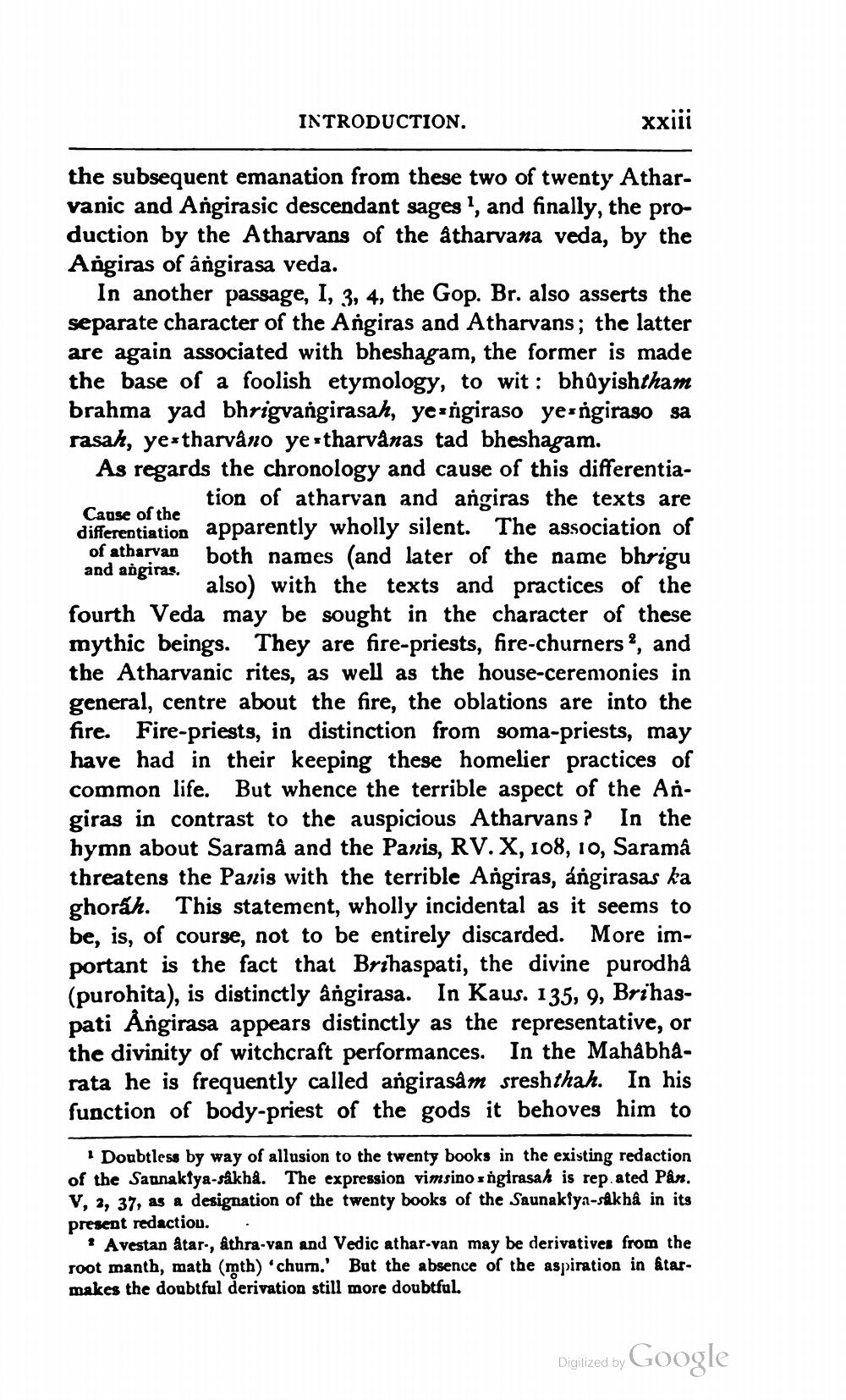________________
xxiii
the subsequent emanation from these two of twenty Atharvanic and Angirasic descendant sages1, and finally, the production by the Atharvans of the atharvana veda, by the Angiras of ângirasa veda.
In another passage, I, 3, 4, the Gop. Br. also asserts the separate character of the Angiras and Atharvans; the latter are again associated with bheshagam, the former is made the base of a foolish etymology, to wit: bhûyishtham brahma yad bhrigvangirasah, ye-ngiraso ye-ngiraso sa rasah, ye tharvâno ye tharvânas tad bheshagam.
Cause of the
of atharvan
As regards the chronology and cause of this differentiation of atharvan and angiras the texts are differentiation apparently wholly silent. The association of both names (and later of the name bhrigu and angiras. also) with the texts and practices of the fourth Veda may be sought in the character of these mythic beings. They are fire-priests, fire-churners, and the Atharvanic rites, as well as the house-ceremonies in general, centre about the fire, the oblations are into the fire. Fire-priests, in distinction from soma-priests, may have had in their keeping these homelier practices of common life. But whence the terrible aspect of the Angiras in contrast to the auspicious Atharvans ? In the hymn about Saramâ and the Paris, RV. X, 108, 10, Saramâ threatens the Panis with the terrible Angiras, ángirasas ka ghorah. This statement, wholly incidental as it seems to be, is, of course, not to be entirely discarded. More important is the fact that Brihaspati, the divine purodhâ (purohita), is distinctly ângirasa. In Kaus. 135, 9, Brihaspati Ångirasa appears distinctly as the representative, or the divinity of witchcraft performances. In the Mahâbhârata he is frequently called angirasâm sreshthah. In his function of body-priest of the gods it behoves him to
INTRODUCTION.
1 Doubtless by way of allusion to the twenty books in the existing redaction of the Saunakfya-sâkhâ. The expression vimsino s ngirasah is rep.ated Pân. V, 2, 37, as a designation of the twenty books of the Saunakiya-sakhâ in its present redaction.
? Avestan åtar-, âthra-van and Vedic athar-van may be derivatives from the root manth, math (mth) 'churn.' But the absence of the aspiration in âtarmakes the doubtful derivation still more doubtful.
Digitized by
Google




